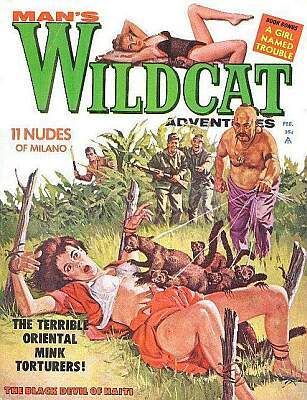I’ve already identified the connection between BDSM imagery and late 19th century Orientalism in books and paintings. I’m currently reading Bram Dijkstra’s Idols of Perversity, about depictions of the feminine in late 19th century art. This introduced me to the softcore, Orientalist work of Ernest Normand.


Normand’s work hits the high points of this genre: slave women of various races on nude display before the sale, Orientalist kitsch artifacts such as fans and a sphinx, that kind of thing. Such paintings were displayed in major exhibitions and smaller reproductions were, I think, widely available.
I found the image above on a page about an art show in Ottawa, Ontario, Canada, called Orientalism & Ephemera.
Orientalism & Ephemera thus explores the attraction and presence of the East within our everyday experience. For many artists, this awareness presents a way to counter the violence of today’s conflicts. Much of our contemporary cultural exchange is in response to the repeated and boundless violence of the politics of empire-building projects, which attempt to colonize the spatial, disempower the colonized, and destroy cultures. In Orientalism, Said addressed the Orient, not as a threatening other but as “an integral part of European material civilization and culture” (Said 1978). By focusing on ephemeral artifacts, souvenirs, pamphlets, postcards, catalogues, travel and commercial items, documents and photographs, the exhibition I have organized reflects a certain closeness and offers an alternative space from which to consider the innumerable manifestations of orientalism within our everyday culture.
The list given above should include “pornography”. The example of emphemera provided, an undated advertisement for a book, is a classic example of the “anthro-porn” genre, of National Geographic nudes and mondo films. (I could write a book on the overlap of documentary and pornography alone.)

Obviously, the art in the above ad is much cruder than Normand’s technically skilled painting. The woman to the left seems an afterthought, as if to deflect the implications of male-on-male torture, and the way the man on the right is holding the right conveys the sexual implications with the subtlety of a sledgehammer. The documentary context puts the reader in the position of the civilized man (presumably) observing the “weird rites” and congratulating ourselves on how advanced we are.
Normand’s high art of Bondage and the low art of “The book of Torture” are both based on Orientalism, the use of what is today the Middle East as an arena for fantasies that unacceptable. The Orientalist view looks outward from the civilized world of industrial, Christian Europe to the rest of the world, but also back in time, to an imagined primordial fantasy where men were men and women were chattel, where social Darwinism had free reign. It was a rejection of liberal society in fantasy.
Such imagery is still published in the 20th century. Witness:







